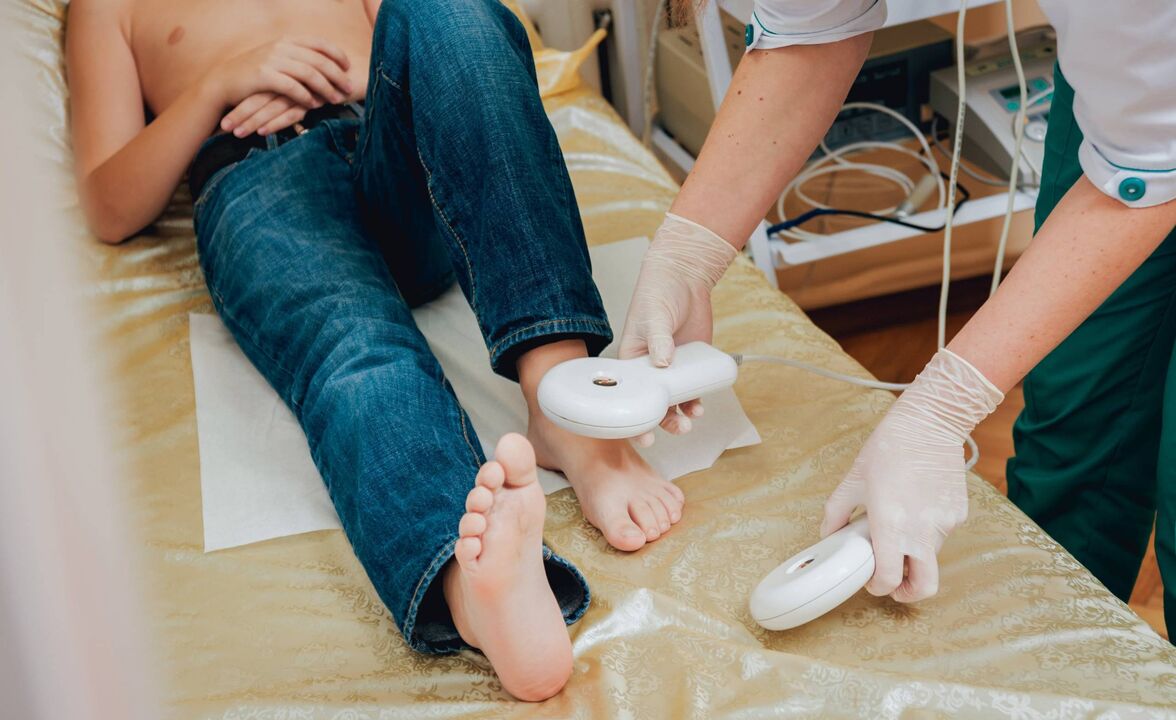Nail fungus - an infectious disease that affects the nail plate. It enters the skin roller in a severe form and can diffuse to other areas. When visiting public places, wearing tight shoes, you have weak immunity and may activate pathogenic microorganisms when you are injured.
Regarding the onset of disease development, the color changes in the affected area, the extension of nails, brittleness, soreness, peeling and unpleasant odors indicate that the color changes in the affected area. Diagnosis includes bacterial particles, histology, cultural examinations, and blood tests in the affected area. Drug treatment. In some cases, surgical intervention is required.
Contrary to the point of view, the shoes of a person whose nails are affected by fungal infections should be thrown away, and this is not the case.
It must be processed with a special device that emits ultraviolet light when placed inside and kills mushrooms.
It is also allowed to use a 40% vinegar solution diluted in water. Wipe the shoes from the inside and leave them in the enclosed bag for several hours.
What is nail fungus
Although Onychomycisois (fungal infection of nails) is not a life-threatening danger, it is an important public health care problem due to the high prevalence and treatment difficulties associated with high recurrence indicators and high indicators of chronic lesions. It has certain consequences for the patient, such as discomfort and painful reactions.
Skin plants are usually responsible for cancer in countries with temperate climates. Destroy keratin and absorb its nutrients, they represent transparent septic forms. The gifs of these mycelial organisms penetrate into the stinginess of the skin and nails.
Fungal cells produce keratinase, which can provide a method to enter live cells. Some species are mainly soil saprophytes, which gain the ability to digest keratin particles and evolve, allowing them to parasitize keratin tissue in animals.
The term "dermal botany" is used to describe infections of microsporidium, trichophyte and epidermal plants. Types of tromycin usually caused - red trichophophyte, trichophyte trichophete fiteftest and plap-shaped epidermal plants (epidermal pathogens): the first two are often involved as causal factors.
Only one red trichophyte is responsible for more than 80% of dinoflagellosis. Incomplete forms of skin, hair, nail infections (home and spinal) are called "skin diseases". Both skin plants and events were identified as the only etiological drugs for myomycosmiasis.
Infection begins with discoloration and deformation of the nails, which can cause pain and complicate their hairstyle. In patients with complex factors, it can cause damage to surrounding tissues, which can lead to secondary bacterial infections.
Furthermore, recent research has revealed the psychological, social and professional consequences of the disease, which health care experts seem to underestimate when treating it.
Doctors point out that nail fungi is a common problem and can affect people of all ages. The main symptoms include changes in the color of the nails, their thickening and brittleness. Experts stress that an important aspect of treatment is early diagnosis, as advanced cases may require longer and more complex treatments. Doctors are advised to use topical and systemic antifungal drugs, depending on the extent of damage. In addition, they focus on the need to adhere to hygiene norms and preventive measures, such as wearing convenient shoes and using single leg care. It is also important to remember that fungi can spread from person to person, so common bathrooms and showers should be avoided.
How to treat nail fungi?
Statistics
Fungal damage to nails is damaged by 5% to 15% of the population. As we age, the prevalence of pathological processes increases to about 30% after 65 years. However, it is worth noting that fungi often occur in children.
The incidence rate increases by 2. 5 times approximately every 10 years. Meanwhile, in childhood, it was only 3%, while the adult population could reach up to 60%.
Unlike women, men are more influenced by men. In addition, 3-7 times the pathological process is 3-7 times higher than the upper limbs.
All species of parasitic mushrooms were combined into 3 groups.

Scrape the skin fungus
Fungal lesions are one of the most common lesions that belong to skin diseases.
In 80% of patients, the disease develops in the context of skin plant reproduction.
Explosive parasites are 5 times more likely to be located on the nails. Mold mushrooms are the rarest species.
Among patients with diabetes, the incidence rate is 3 times higher. In 90% of psoriasis patients, the likelihood of infection is also 2 times higher.
reason
The risk factor is contact with the source of infection. For example, hairy plants that evolved from ancestors living in the soil infected farmers, agricultural workers, and veterinarians. Although cases of infection obtained in the laboratory are also registered, it is transmitted through direct contact or bite.
Several factors unique to modern life have led to the prevalence of thyroxine disease. These include:
- Wear tightshoeHigh heel;
- Common useWetvenue (as a shower and dressing room);
- Health deteriorationagingpopulation;
- The number of people has increasedimmunitydue to diseases (e. g. , HIV infection);
- TherapeuticDrugs (immunosuppressants, postoperative treatment, broad-spectrum antibiotics);
- StraightInjuriedNails, including certain teak diseases (nail bites);
- Geneticstendency.

Treat nail fungi with laser
Laser therapy for nail fungi is an effective hardware method that helps accelerate recovery.
Real fungal infections are found on the nails of the toes more frequently than those of the fingers. This is due to the fact that they are subjected to greater friction and sweating. Socks and shoes help in a dark and humid fungal environment.
Causes may include poor peripheral blood circulation, diabetes, repeated nail injuries, powerlessness or unwilling to properly cut nails on nails and maintain proper care. The risk increases with age and potential illness in the nails.
Many people face the problem of nail fungus and have a very diverse view of it. Some people think that this is not only an aesthetic problem, but also a serious disease that requires careful approach. Many people share their treatment experiences, talking about various drugs and folk remedies. It has been pointed out that fungi can recover even after successful treatment, which can cause disappointment and fear of reinfection. Others stressed the importance of prevention, suggesting monitoring sanitation and avoiding public places with high humidity. Overall, discussions about nail fungi are often accompanied by tips and suggestions, indicating their prevalence and relevance in society.
Nail fungus. Ignore the shape of nail fungus
type
Due to several cultural and socioeconomic factors, the universality of nail fungi varies from around the world. That is, it depends on the geography, population, mycological characteristics and diagnostic methods used.
Four types of Onychomycisois characterized by clinical manifestations and invasive pathways have been identified.
Far and lateral submarines
It is observed in most cases almost always due to skin plant infections. It acts on hypoplasia, usually along the edge of the side, along the proximal end of the nail bed, which leads to suberina and brain dissolution, although the nail plate has no effect at first.
It can be restricted by one side and spread out on the sides, covering the entire nail and moving forward steadily until it reaches the rear nail roller.
Finally, the nail plate becomes loose, usually cracked due to damage, although the damage is likely to be associated with invasion of skin plants with keratinizing fluid properties. Examination of the surrounding skin almost always reveals signs of skin botanical effects.
Superficial white thyroid disease
This is the largest infection by hairy plants. Less common types affect the surface of the nail plate, which obtains a white color and a significant exfoliation (but solubility is not a characteristic of chy surgery).
It happens that the "keratin granules" (the reaction to nail polish) can be made incorrectly. For confirmation, laboratory tests are necessary.
Proximal tray mycomycosis
A rare skin plant infection, usually associated with intercurrent disease. Pathogenic fungi invade the inherited nail plates and methyl matrix. It occurs in immunosuppressive patients.
Candidiasis tumor disease
Another name is to infect nails with Candida yeast, classified as:
- ChronicparoniciaSecondary malnutrition of nails;
- ChronicCandida diseaseMucosal membrane;
- RemoteInfectnail;
- SecondaryCandidiasis.

Prevent nail fungi
Fungi in the nails and feet is an infectious disease caused by pathogenic bacteria.
Distal yeast infection is rare (in patients with Raynaud's disease or other forms of vascular failure).
Chronic tar occurs under the original conditions. Swelling of the folds behind the nails is related to chronic wet state. The cuticle separated from the nail plate loses its waterproof properties. Microorganisms penetrate into the subcutaneous space, causing swelling of the posterior folds.
Chronic Candida mucoida covers the mucosa, which is caused by a decrease in cellular immunity. The clinical signs vary according to the severity of immunosuppression, and in severe cases, the nails are completely thickened.
Secondary candidiasis occurs due to a variety of nail diseases, mainly psoriasis.
Although some clinicians consider this to be a separate subtype, total malnutritional trophic diseases are used to describe the final stage of nail disease. This may be the end result of any of the four major models.
symptom
The most common symptom of fungi is the extension of the nail and its color changes to white, black, yellow or green. As the infection develops from its initial stage to its neglected form, it becomes fragile and the fragments are shattered. If you don't treat it, the skin under and around your nails will become inflamed, hurt or peel. There is an unpleasant smell.
Dinoflavobacteriasis in patients with weak immunity is a very serious health problem. A severe infection can not only constantly remind the patient of his or her worsening state, but also potentially transfer fungal pathogens to another person.
diagnosis
The clinical manifestations of deformed nails should warn doctors about the possibility of inflammatory diseases. However, since mushrooms are only half the cause of all lesions, caution must be taken to correctly identify the signs and symptoms of other diseases that mimic myomycosis and distinguish between different causes.
These include psoriasis, lichens, bacterial infections, contact dermatitis, traumatic female plants, congenital pachionicia, yellow nail syndrome, idiopathic tumor breakdown. Repeated nail damage can lead to distal on cholesol - colonization of damaged areas by microorganisms that produce their pigmentation.
The use of appropriate diagnostic methods includes:
- smear,Potassium treated with potassium hydroxide;
- chooseFungal culture (from selected material: scraping or fragmentation of nails);
- Histology.
The first step in the sampling process is to thoroughly clean the nail area from the contaminant (bacterial) alcohol. Since the invasion and location of infections vary in the type of cancer, different methods are used to obtain the best sample, depending on the so-called diagnosis.
treat
The main purpose of treatment is to destroy the body proven by microscopy and culture. Clinical Improvement - Secondary and based on a system that strictly evaluates nail abnormalities.
It is important to admit that successful destruction of fungi does not always lead to the correct shape of the nails, as they can deform into infections.
The main treatments are related or oral antifungal drugs:
- Clean paintThey consist of a function of an effective amount of antifungal agent in a transparent, stable, membrane-forming medium. When applied to the nails, this composition provides a sturdy, transparent waterproof membrane.
- oralPreparations that fall directly into the blood and pass through the liver enhance the possibility of solving problems. However, they have side effects and may produce negative reactions in combination with other drugs.
The main task is how to identify mycotic diseases and provide relevant treatments. At this stage, some related drugs are only in development and testing. People available in the drug market cannot provide a complete guarantee of treatment.
To overcome the limitations of traditional composition, an effective system is necessary to bring antifungal agents into the depths of the nails.
For example, chemical (keratinizing fluid) processing in affected areas can obviously improve the results. Polyproteases, urea and salicylic acid are used to enhance the penetration of antifungal drugs.
prevention
Everyone is closest to seeing his nails and can quickly identify any changes. Even if there is a fungal infection, precautions are strongly recommended. After washing every day, wipe your legs thoroughly, especially dry between your fingers.
It is best to wear cotton socks and use good powder or leg spray. Nails should be trimmed neatly. Both manicure and pedicure can be useful, sometimes allowing you to truly get rid of the creatures (in the initial stages of infection).
There have been significant success in the development of effective and safe drugs over the past decade, but nail fungi may remain a disease of modern civilization, which is hard to get rid of. The environmental conditions that contribute to this are increasing with the number of people with weakened life expectancy and immunity.
Perhaps the most important task today is the exact diagnosis of causal agents, a factor that allows the selection of the best antifungal agents whose activity spectrum covers the infected microorganisms.
Ask a question
What is the most effective treatment for fungi on nails?
The active substance of naphthalene hydrochloride quickly penetrates the lesions, destroying pathogenic microorganisms at the cellular level. The solution and nail polish contain carbapyridine hydrochloride.
How to remove fungus from your nails at home?
One or two per week), it is recommended to bathe your legs in warm (37-38 degrees Celsius) water and add sea salt (100 g) or a little citric acid (50 g per 5 liters of water). Because fungi are afraid of the acidic environment, this therapy helps reduce the amount of fungal cells on the legs and nails.
What do fungi on nails fear?
What do fungi on nails fear? Dinoflagellate disease does not like exposure to baking salts, hydrochloric acid solutions, hydrogen peroxide, and temperature exposure to above 60 degrees.
Can nail fungus vinegar and soda be cured?
Usually, use a solution of vinegar, soda, iodine, celandine or herbal infusion. However, these funds can only solve one superficial problem. If the fungus has entered the nail bed and matrix, then the folk approach will be useless. Instead, they often cause inflammation and stimulate soft tissue.
AdviChe
Council 1
Get through your nails regularly. Pay attention to changes in the color, texture and shape of the nails. Early detection of fungi will help prevent their spread and promote treatment.
Committee No. 2
Monte legs dry. Fungi prefer humid conditions, so try wearing breathing shoes and changing socks as often as possible, especially after physical exercise or hot weather.
Council 3
Avoid public places with high humidity such as saunas, swimming pools and locker rooms. If you still need to go there, use special protective shoes or slippers to minimize the risk of infection.
Council Fourth
Contact your doctor with the first sign of the fungus. Don't intervene yourself, as improper treatment can exacerbate the problem. Experts will be able to prescribe effective medications and provide nail care advice.
















